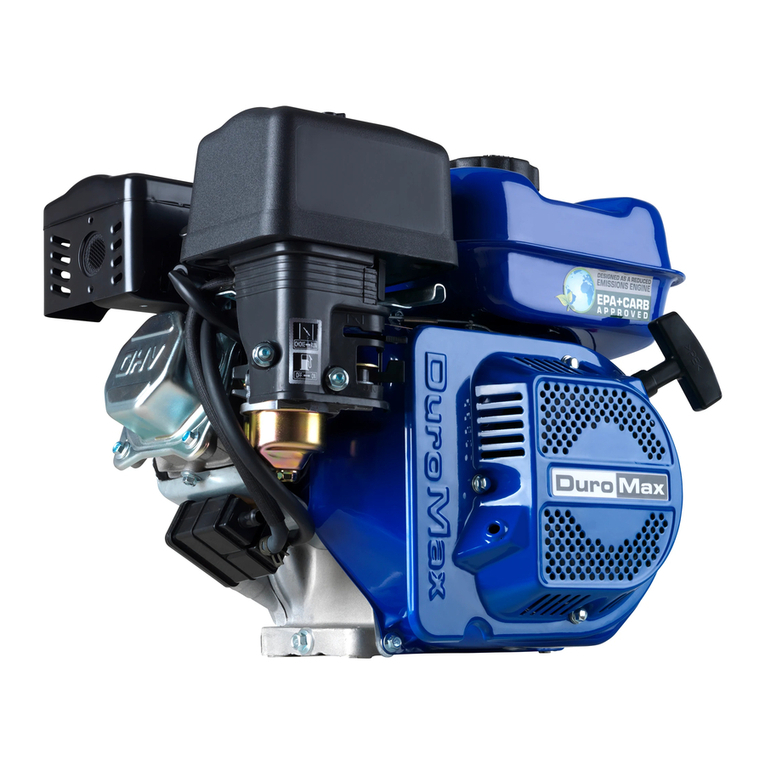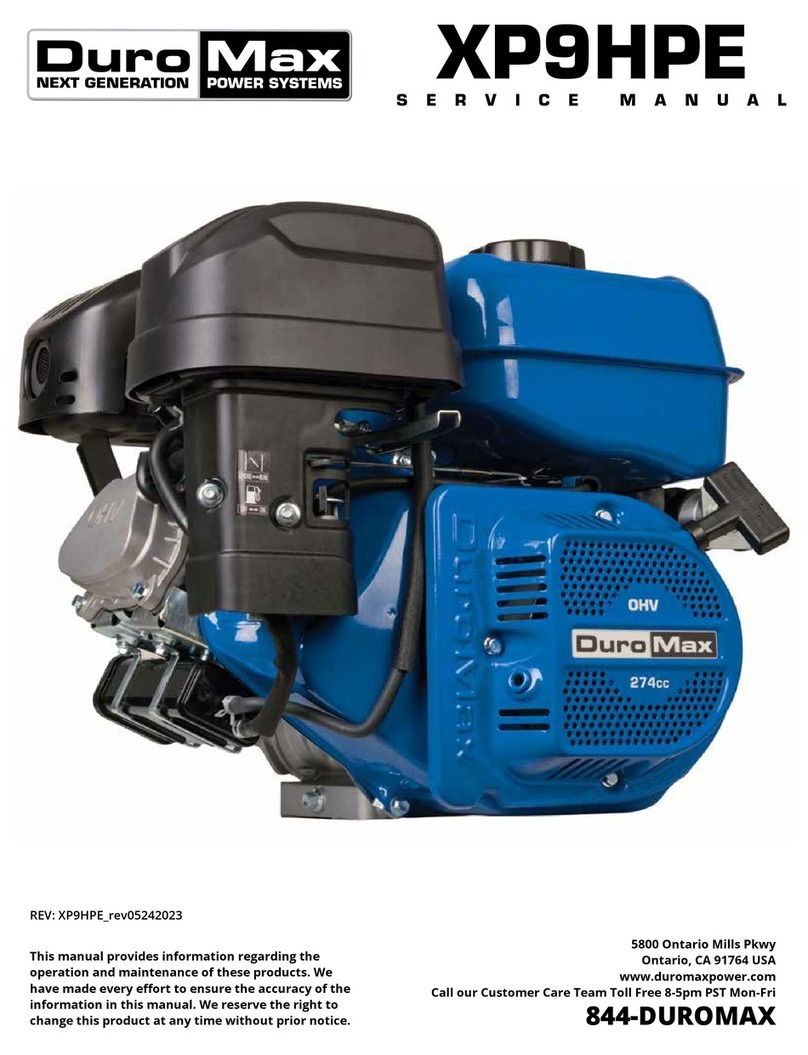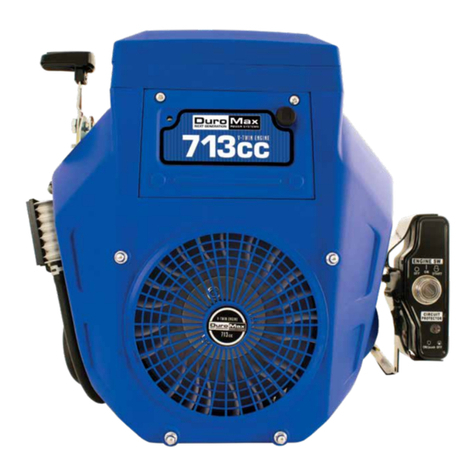
9
Break-In Period
As the best practice for any new combustion motor it’s recommended to perform the break
in procedure as follows:
●Run the engine for the rst 6-8 hours on conventional oil, then change the oil. After
the break-in period synthetic oil may be used.
●During the break in period of the rst 6-8 hours keep the engine speed under 50% for
optimal results.
●Check and clean the air lter if necessary after the break-in period.
High Altitude Operation
At high altitudes, the standard carburetor air/fuel mixture will be too rich. The performance will decrease,
and fuel consumption will increase. A very rich mixture will also foul the spark plug and cause hard starting.
Operation at an altitude that diers from that at which this engine was certied, for extended periods of
time, may increase emissions. High altitude performance can be improved by specic modications to
the carburetor. If you always operate your engine at altitudes above 3,000 feet (900 meters), have a dealer
perform this carburetor modication. This engine, when operated at high altitude with the carburetor
modications for high altitude use, will meet each emission standard throughout its useful life. Even with
carburetor modication, engine horsepower will decrease by about 3.5% for each 1,000-foot (300-meter)
increase in altitude. The eect of altitude on horsepower will be greater than this if no carburetor
modication is made.
When the carburetor has been modied for high altitude operation, the air/fuel mixture will be too lean for
low altitude use. Operation at altitudes below 3,000 feet (900 meters) with a modied carburetor may cause
the engine to overheat and result in serious engine damage.
Note: Jet kits available for purchase upon request, please contact us at 844-DUROMAX to set up your
parts order.
Altitude Range Jet Kit Part Number
3,000 ft. - 6,000 ft. DJ170FD-14100-3KJS
6,000 ft. - 8,000 ft. DJ170FD-14100-6KJS




































